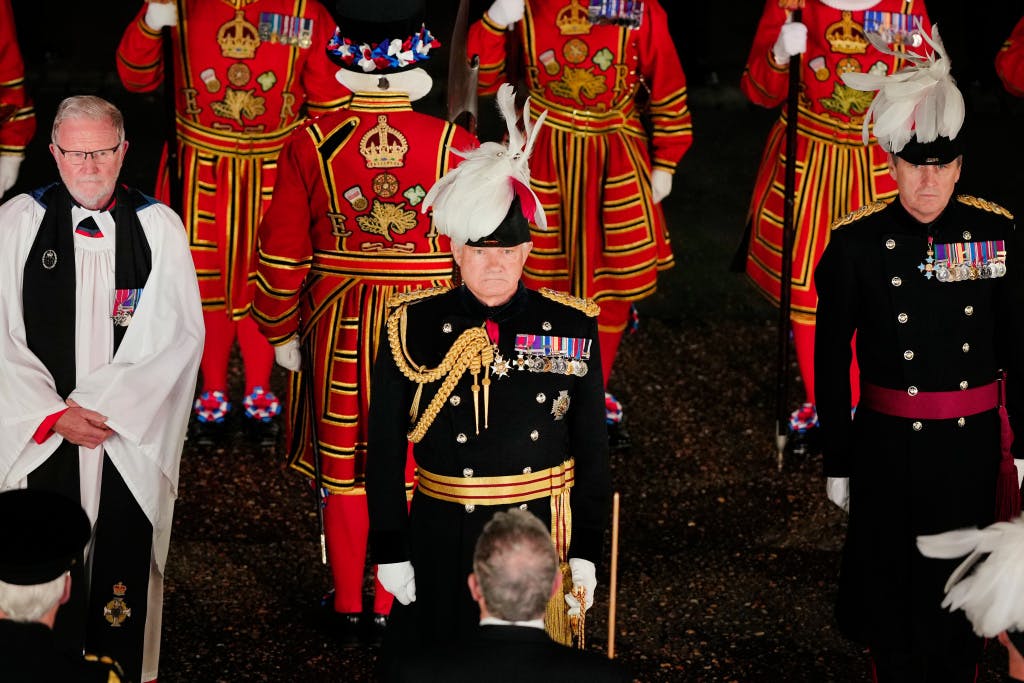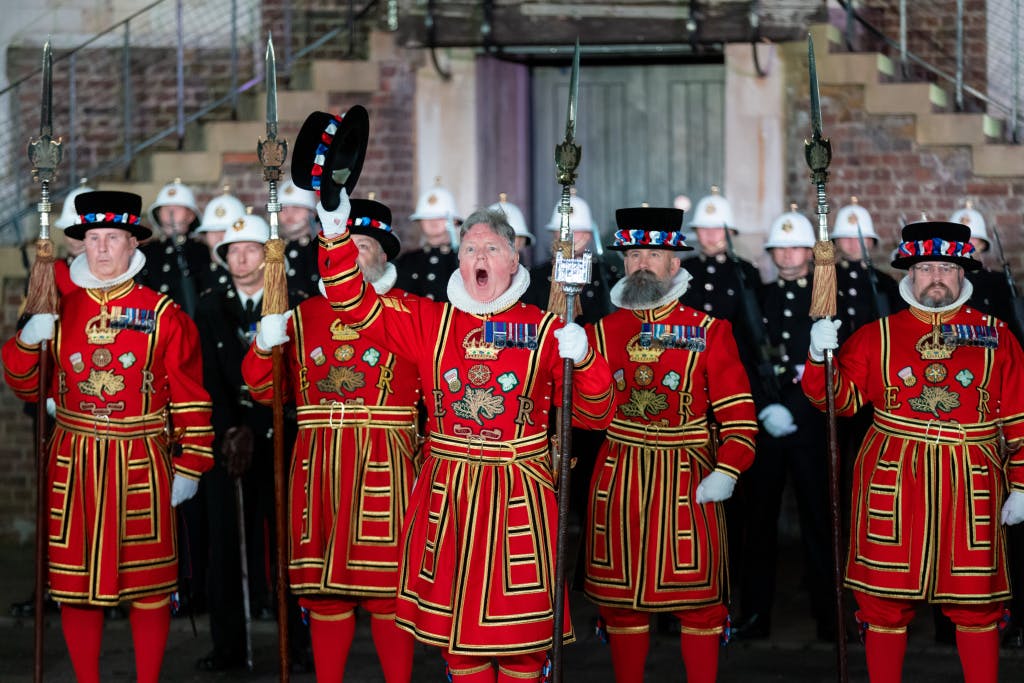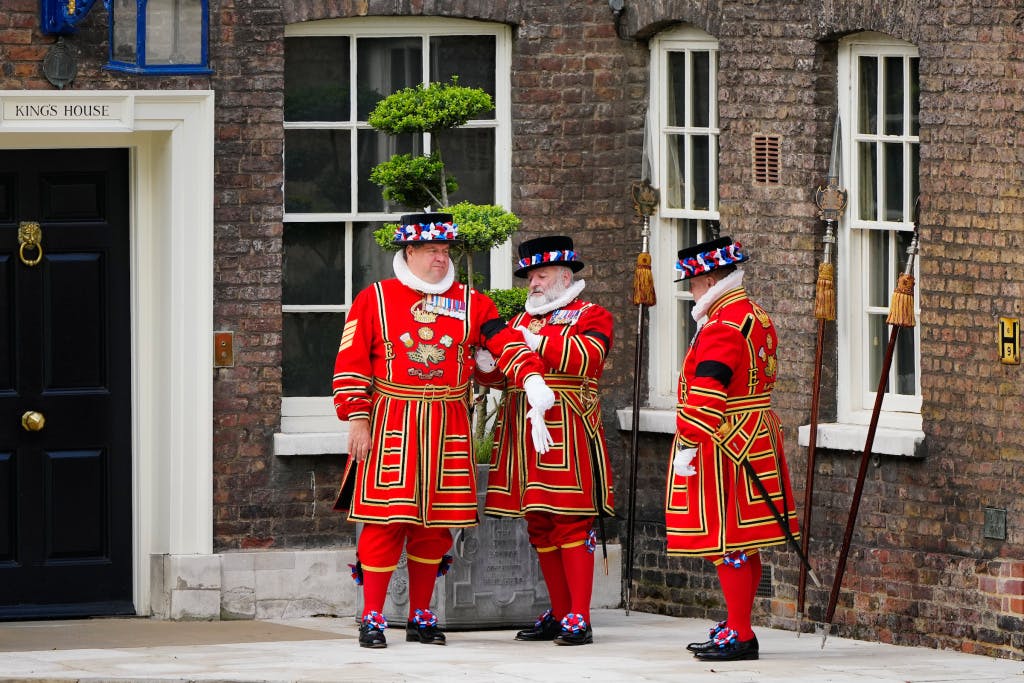The New Constable of the Tower of London
Date: 04 October 2022
Author:
Historic Royal Palaces
04 Oct 2022
The Tower of London has a new Constable. General Sir Gordon Messenger became the 161st Constable of the Tower of London in August 2022, succeeding General The Lord Nicholas Houghton.
On 05 October the General Messenger was officially installed as Constable, becoming the first Royal Marine to hold the post, which has been recruited from senior ranks of the Army since 1784.
Fanfares and a parade featuring our Yeoman Warders (Beefeaters) will take place before the Lord Chamberlain, representing His Majesty the King. The Lord Chamberlain will hand the King’s Keys (the Tower’s symbolic golden keys) to the Constable as a symbol of his custodianship of the Tower.
What does the Constable of the Tower of London do?
Historically, the Constable was in charge of the operation, upkeep and security of the Tower and all those who lived and worked within it. Amongst his particular duties was the safekeeping of the Tower’s prisoners. The role was established by William the Conqueror c.1078 and the holder was then known as the Keeper of the Tower. It was not until 100 years later that the title was changed to Constable. Today the role of the Constable is largely ceremonial.
In return for his service, the Constable was given the right to seize any swan that swam under London Bridge; any horse, ox, cow, pig or sheep that fell into the Thames from the bridge and any cart that fell into the Tower of London’s moat. For every foot of livestock that stumbled into the Tower’s moat the Constable received a penny, and any cart that fell in became his property. Also all the herbage growing on Tower Hill belonged to the Constable!
Responsible for famous prisoners
Sir William Kingston, Constable during the reign of Henry VIII, was responsible for the incarceration and fate of some of the Tower’s most famous prisoners, including Queen Anne Boleyn and Sir Thomas More. In order to keep the king fully informed of Anne’s words and actions, he installed his wife into her apartments as a spy.
What is the Constable's Dues?
Every ship that came upstream to the city had to moor at Tower Wharf to unload a portion of its cargo for the Constable. These included oysters, mussels, cockles, rushes and wine.
This tradition is still upheld today at the annual Ceremony of the Constable's Dues. When a ship of the Royal Navy visits the Port of London, the Captain, with an escort from the ship’s company, presents a barrel of wine (the “Dues”) to the Constable on Tower Green.
Where does the Constable of the Tower of London live?
The Constable’s official residence is the Kings House at the Tower of London. Built in the 16th-century, the timber-framed building overlooks Tower Green. The house, formerly known as The Queen’s house, was renamed following the proclamation of HM King Charles III.
Notable Constables of the Tower
Geoffrey de Mandeville
The first constable of the Tower, a French knight called Geoffrey de Mandeville, was appointed Keeper of the Tower by William the Conqueror after distinguishing himself at the Battle of Hastings.
At first, the office was a hereditary right of the de Mandeville family but that right was confiscated by the king as a punishment after William de Mandeville allowed the first prisoner of the Tower, Bishop Ranulf Flambard, to escape.
Thomas Becket
One of the earliest non-hereditary appointees was Thomas Becket, later Archbishop of Canterbury, the only holder of the office to date to be made a saint.
The Duke of Wellington
The Duke of Wellington became Constable in 1826 and remained in the role for 26 years.
A national hero from the Napoleonic Wars, the Duke was a highly influential Constable and ruled during a time of immense change for the Tower. He reformed the Body of Yeoman Warders by establishing the criteria that they must be ex-military, he closed the pubs and shops inside the Tower in order to turn it into an efficient military installation and drained the moat which, by 1841, was ‘impregnated with putrid animal and excrementitious matter…and emitting a most obnoxious smell’, creating the dry ditch, or fosse, that visitors see today.
He also oversaw the move of the Royal Menagerie to become London Zoo in Regent’s Park, and his tenure saw the Tower establish itself as a major tourist attraction.
More from our blog

Famous ghost stories of the Tower of London
24 November 2025
Take a walk through the Tower of London’s shadowy corridors, to uncover the chilling tales of its most famous ghosts and paranormal activity.

'Castles of the air': Defending the Tower of London during the Second World War
10 November 2025
When London faced the fury of the Blitz during the Second World War, the Tower of London found a new way to protect the city from the sky – a huge hydrogen-filled 'barrage balloon'.



